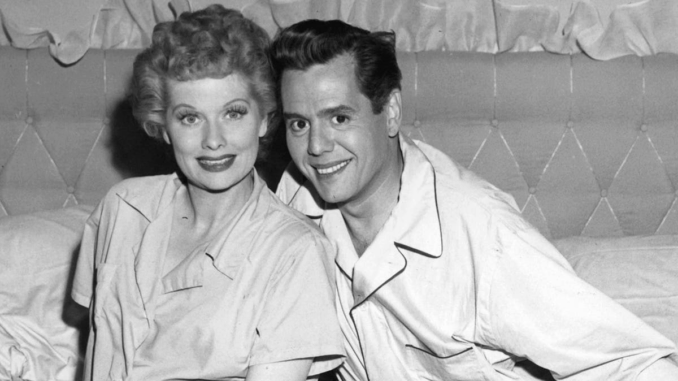
In the ever-changing landscape of television, where shows are born, become phenomena, and then fade into obscurity, one program stands as an unshakeable monument to the power of comedy. For more than 70 years, I Love Lucy has been a constant presence in homes around the world, making audiences—from baby boomers to Gen Z—laugh with the same unbridled joy as they did in the 1950s.
The show’s longevity is a remarkable feat, especially when so many other sitcoms from its era now feel dated and out of touch. The question isn’t just why I Love Lucy is still relevant, but why it is still hilarious. The answer lies not in a single element but in a perfect storm of comedic genius, groundbreaking production, and a timeless understanding of the human condition.
The Ageless Art of Physical Comedy
At the very heart of I Love Lucy‘s enduring appeal is the comedic genius of its star, Lucille Ball. She was a master of physical comedy, a fearless performer who was willing to do anything for a laugh. Her body was an instrument, and she played it with the precision of a maestro.
Think of her most famous scenes:
- The Vitameatavegamin commercial, where she gets progressively drunker and slurs her way through a fake endorsement. It’s a classic example of a simple premise executed with impeccable timing and a willingness to look ridiculous.
- The chocolate factory scene, where she and Ethel struggle to keep up with an out-of-control conveyor belt. The escalating panic, the slapstick of stuffing chocolates into their mouths, and their horrified expressions are pure comedic gold.
- The grape stomping scene, where she wades into a vat of grapes in Italy and ends up in a messy, hilarious brawl with a local woman.
These moments are not reliant on dated references or period-specific humor. They are based on universal, relatable situations—the panic of a job gone wrong, the desire to impress, the chaos of a foreign country—and they are executed with a timeless physicality that still makes us double over with laughter today. Lucille Ball’s willingness to be the butt of the joke is a powerful form of comedy that knows no expiration date.
The Universal Themes of Love and Laughter
Beyond the slapstick, the humor of I Love Lucy is rooted in the simple, universal truths of married life and friendship. The show’s premise is a comedic goldmine: a housewife who desperately wants to break into show business, a bandleader husband who constantly tries to thwart her plans, and a best-friend couple who are her reluctant accomplices.
- Marital Misunderstandings: The endless squabbles between Lucy and Ricky are the stuff of legend. Whether Lucy is hiding a new hat from him or feigning a sickness to get his attention, their disagreements are relatable to any couple. Ricky’s exasperated “Waaah!” and Lucy’s wide-eyed innocence are a classic dynamic that never gets old.
- The Power of Friendship: The relationship between Lucy and Ethel Mertz is one of the most iconic friendships in television history. They are partners in crime, their unwavering loyalty and codependence a source of endless comedic plots. Their shared dreams and schemes are a testament to the power of friendship and the joy of having a co-conspirator.
The show’s humor is not tied to a specific time or place. It is a comedy of manners and emotions, one that explores the universal human desire for love, recognition, and friendship.
The Genius of Desilu: Production That Endured
While Lucille Ball and the cast are the reason the show is funny, the genius of her husband and business partner, Desi Arnaz, is why it still looks and sounds so good today. Arnaz was a visionary, and he made a series of production decisions that were revolutionary for their time.
- The Three-Camera Setup: At the time, most sitcoms were filmed with a single camera, and the result was often stiff and unnatural. Arnaz insisted on using a three-camera setup with a live studio audience. This allowed for more fluid and dynamic blocking, with cameras capturing different angles simultaneously. This technique is now the standard for most multi-camera sitcoms and is a key reason why I Love Lucy feels so modern.
- The Use of Film: The network wanted to use a cheap, low-quality process called kinescope, which would have resulted in a grainy, blurry image. Desi Arnaz, a former bandleader with a keen eye for business, insisted on using high-quality 35mm film. He even paid for the extra costs himself, in exchange for owning the rights to the show. This decision, which was ridiculed at the time, is the very reason we can watch I Love Lucy today in pristine, high-definition quality.
A Legacy of Heart
I Love Lucy was not just a groundbreaking comedy; it was also a show that broke important social barriers. The show was one of the first to feature an interracial couple, a bold move for the 1950s. Desi Arnaz’s Cuban-American heritage was a central part of the show’s humor, but it was always handled with warmth and respect. The show’s creators saw that love could transcend cultural and racial differences, a message that is as relevant today as it was 70 years ago.
Ultimately, I Love Lucy endures because it has heart. Behind the chaos, the crazy schemes, and the loud laughter, there is a deep sense of love and family. The audience knew that no matter how much Lucy and Ricky fought, they were deeply in love. The show gave us a fictional world we wanted to be a part of, one filled with humor, warmth, and the kind of authentic relationships that never go out of style. It is a show that is not just a relic of the past; it is a timeless masterpiece that will continue to make us laugh for generations to come.
